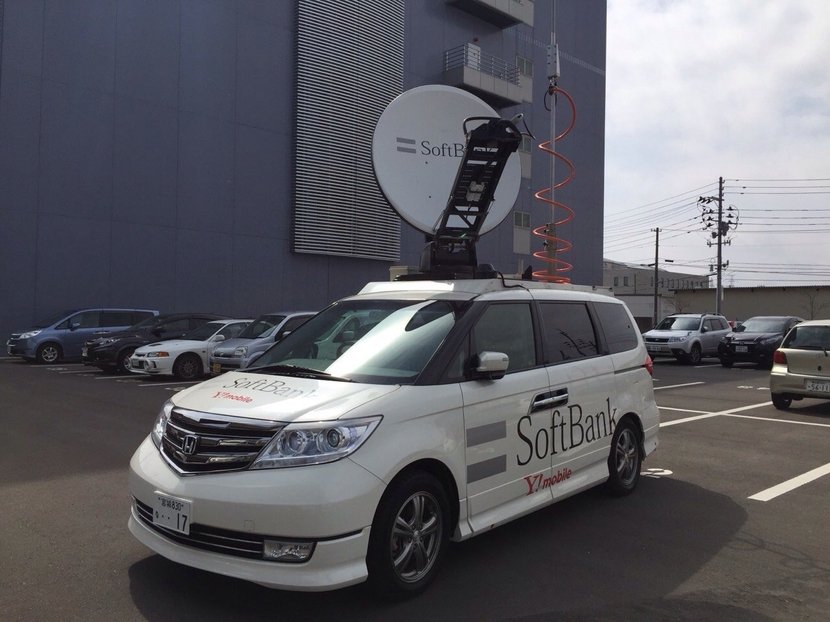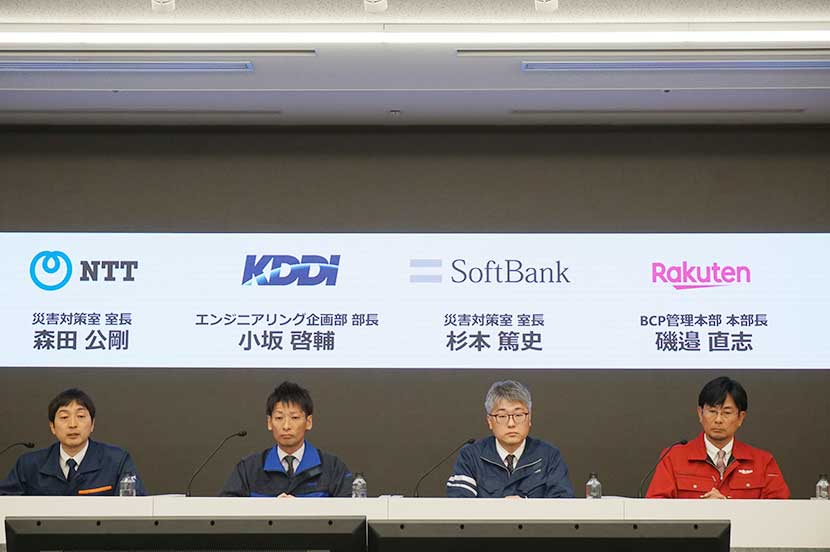
As reported earlier by SoftBank News, on January 1, 2024, a magnitude 7.6 earthquake struck the Noto Peninsula in Ishikawa Prefecture, Japan, and immediately after that SoftBank Corp. (TOKYO: 9434) has been urgently working to restore communications as quickly as possible and support people in affected areas. Over 500 SoftBank employees across Japan were mobilized to conduct restoration work.
This work is proving to be extremely challenging due to impassable roads, disrupted landline networks and harsh winter conditions. To better understand the situation on the ground, SoftBank News spoke to employees working on the front lines to restore communications on the Noto Peninsula.
The challenging situation in Noto
The strongest tremors in Ishikawa Prefecture caused numerous buildings to collapse. Landslides also made some roads impassable, isolating communities. In these unforgiving conditions, SoftBank has been advancing recovery efforts to provide communication services as quickly as possible to people in evacuation centers.


A base station is visible, but unaccessible by vehicle
In January, the Noto Peninsula typically sees a lot of snow, which poses a significant problem. In some places, snow levels reached several tens of centimeters, making transportation by road particularly difficult. In some areas, even attempting to move on foot is deemed to be too dangerous, significantly complicating recovery efforts.
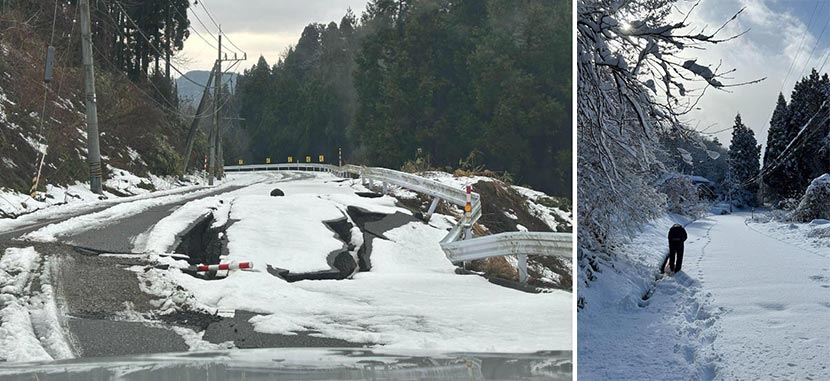
Daily force of more than 500 working to restore communications
Immediately after an earthquake struck at 4:06 PM on January 1st, SoftBank checked its communication network for damage and confirmed the safety of its employees. A few minutes later, at 4:10 PM, a 7 magnitude temblor hit the same area, drastically changing the situation. An internal disaster response center was established, and employees from various departments sprang into action, assessing the effects on the communication network, stores and employees, launching the Disaster Message Board, and disseminating information on communication disruptions through websites and on social media channels.
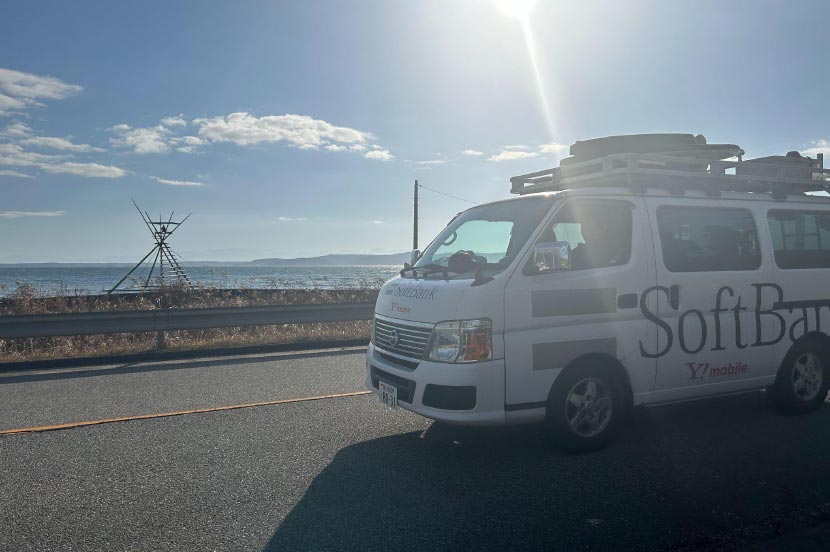
Damage to SoftBank’s communication network was particularly significant, with some base stations destroyed outright and backhaul cables severed. As a consequence, many base stations could not provide communication services over a wide area as usual.


With many roads severely damaged, making them difficult to navigate and causing traffic jams, on-site recovery work has been challenging as affected areas are hard to reach.
"Even driving was a challenge with buckled roads, sinkholes and cracks. The big snowfall following the earthquake was another major obstacle to recovery work. We were often stranded in snow and had to dig ourselves out, making just reaching a site a formidable task," said one front-line employee.


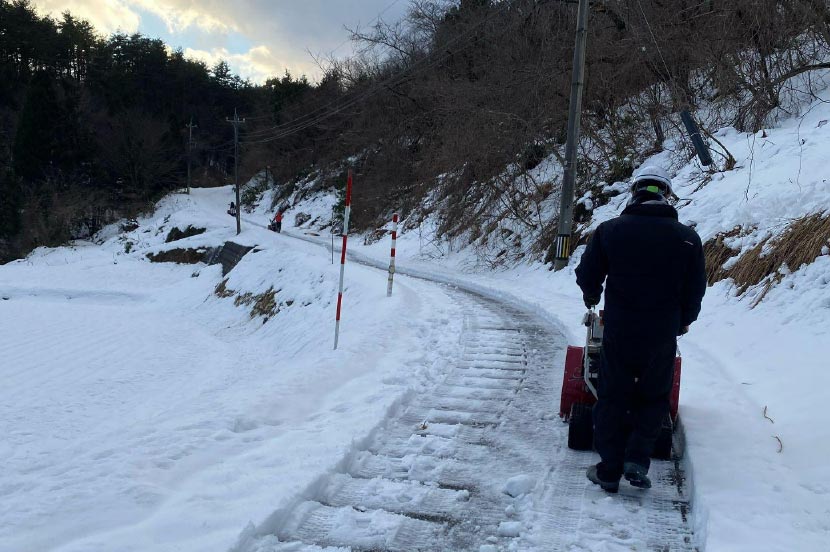

Snow needs to be cleared to reach some base stations

Road conditions written and updated on a whiteboard
Prioritizing the quick restoration of communication networks
Network engineers and support teams have been working around the clock to restore SoftBank’s communication network, and communication service availability is expanding.

SoftBank mobile communication network availability shown in orange and unavailability in gray
Status from left to right: January 2 at 8:00am, January 8 at 6:00pm, January 17 at 5pm
One employee described fueling logistics. "We set up base camps in Wajima City and Noto Town in Ishikawa Prefecture. The needed equipment is first brought to these camps, and then dispatched to restore disrupted base stations. We're also providing fuel from our temporary fueling stations to other telecommunication carriers, fostering cooperation beyond company boundaries. We expect to continue with this collaborative approach for future restoration efforts."
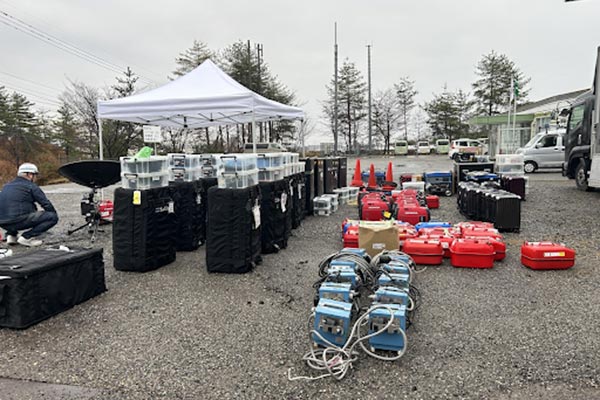
Restoring base stations requires securing electricity and backhaul that connects to network infrastructure. Due to the earthquake, numerous base stations were unable to provide communication services due to severed power transmission lines and communication cables.
A worker described the restoration approach unique to the Noto Peninsula Earthquake. "Though it would be ideal if we could get mobile base station vehicles and mobile power sources to the disrupted base stations, the difficulty of road travel in the disaster-affected areas has led us to use highly portable, small-sized equipment that an individual can carry by hand. We’re carrying out restoration work mainly with portable satellite antennas and portable generators. By securing temporary satellite-based backhaul with portable satellite antennas, we can quickly restore communications in areas originally covered by the base stations."
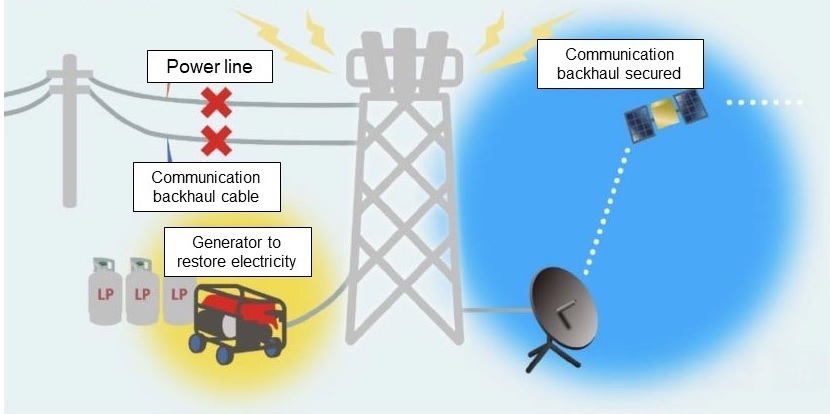
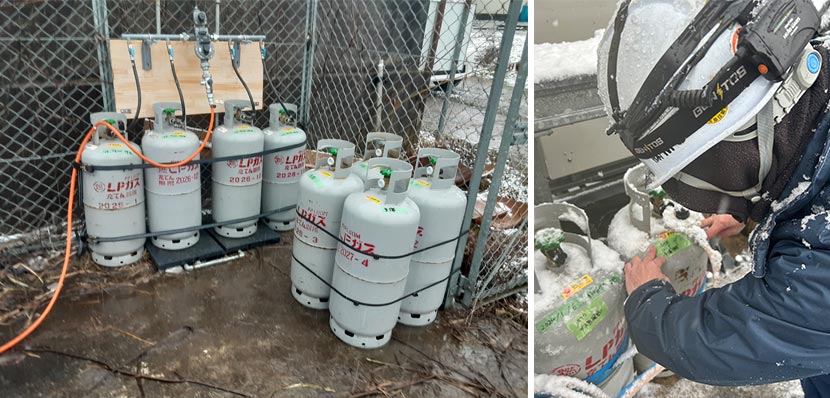
Connecting a generator to liquid propane gas


Installing a portable satellite antenna
In parts of Wajima City, SoftBank is using drones to secure network coverage. SoftBank’s “Wired Power Feed Drone Wireless Relay System” uses drones to hover above an area to provide communications service in a radius several kilometers wide. These drone base stations can be deployed quickly and operate for extended periods as they are connected to power cables.
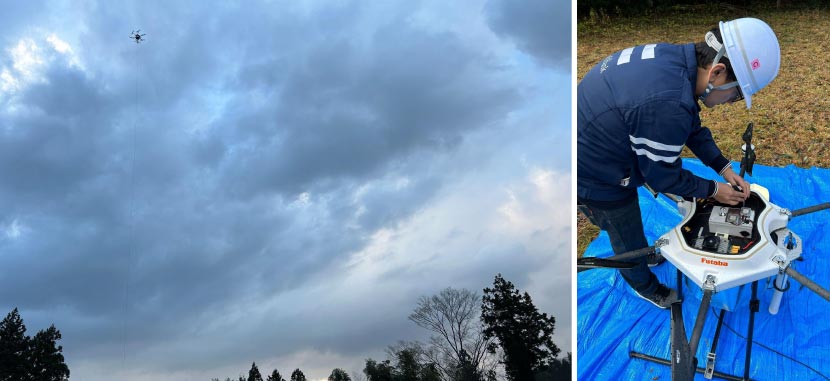

The “Wired Power Feed Drone Wireless Relay System”
With more than 100 teams and extensive base station restoration work, coordinating and managing the overall restoration effort is also crucial.
"SoftBank's internally developed disaster response information coordination system has been incredibly useful. It enables the management of affected base stations and the coordination of local work teams. It also serves as a tool to communicate with teams on the ground, enabling everyone to stay updated on the latest situation so we can work as one to restore communications," explained one employee.
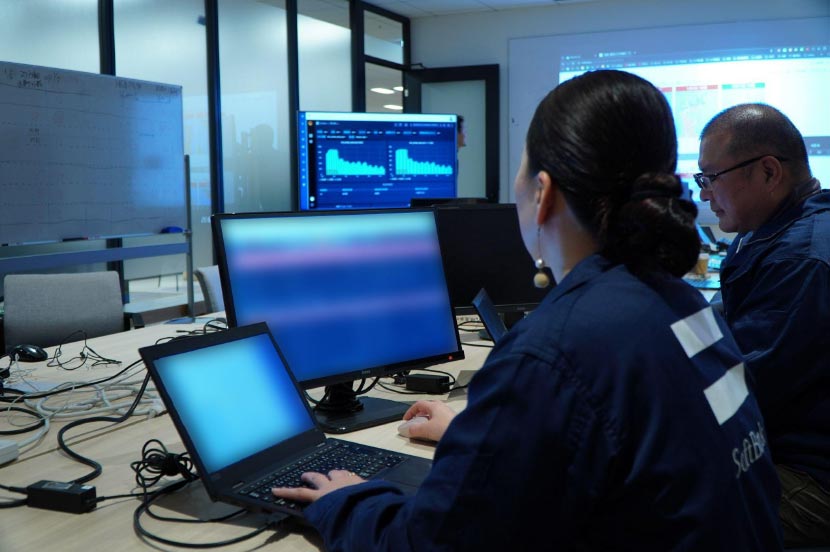
SoftBank’s internal information coordination system for disaster response
In addition to these measures, SoftBank dispatched liaisons to the Ishikawa Prefecture’s Disaster Response Headquarters to strengthen coordination with municipalities, the Ministry of Internal Affairs and Communications, and Japan’s Self-Defense Forces. This includes sharing information with infrastructure operators, confirming priority areas for restoration, and closely coordinating with the Self-Defense Forces and other telecommunication carriers.
Said one worker, "We understand that those affected by the disaster must be feeling extremely anxious. There are still areas we cannot enter, which is frustrating, but we’re aiming to fully restore our communication network as quickly as possible so victims can have peace of mind."
Providing “Starlink Business” free-of-charge
At Suzu City Hall, Noto Town Hall, Wajima City Hall, and other locations, SoftBank is providing free equipment and installation support for the satellite broadband Internet service “Starlink Business.” Starlink Business is convenient for setting up Internet environments in evacuation centers as its antenna is small, lightweight, and easy to transport, enabling quick Wi-Fi setup. Working in coordination with the Ministry of Internal Affairs and Communications and Ishikawa Prefecture, SoftBank plans to provide and install 100 Starlink Business kits to administrative bodies and public facilities in Ishikawa Prefecture at no cost.

Japan’s carriers collaborate to expedite restoration

Network representatives from NTT DOCOMO, KDDI, SoftBank Corp. and Rakuten Mobile
As an employee described above, Japan’s telecommunication carriers are also collaborating to accelerate the restoration of communications. In this spirit of cooperation, on January 18, 2024, network representatives from Japan’s four mobile network operators–NTT DOCOMO, INC., KDDI Corporation, SoftBank Corp., and Rakuten Mobile Inc.–participated in a joint press conference to explain their efforts in the emergency-level recovery of communication services on the Noto Peninsula, and their full-scale recovery plans going forward.
SoftBank’s Senior Vice President and Chief Network Officer (CNO) Tomohiro Sekiwa explained that SoftBank set up its base camps deep in the disaster-stricken areas early. As the communication restoration progressed, SoftBank moved the refueling stations further northward toward disrupted areas and coordinated refueling operations with other operators. By doing so, they were able to carry out recovery operations more efficiently.

Giving an update on SoftBank’s progress, Sekiwa noted that, excluding areas inaccessible due to road blockages, an emergency recovery of 4G LTE and 3G service areas was achieved on January 15, 2024. Sekiwa said that SoftBank values the access to connectivity for each affected person and that it will continue to take measures to ensure the provision of stable communication services while monitoring the communication quality of recovered base stations.
Sekiwa also explained that while SoftBank had originally planned to discontinue its 3G services at the end of January 2024, to support the livelihoods of customers using 3G services in the disaster-affected areas, it decided to postpone the 3G switch-off to April 15, 2024.
Related news
(Posted on January 19, 2024)
by SoftBank News Editors

